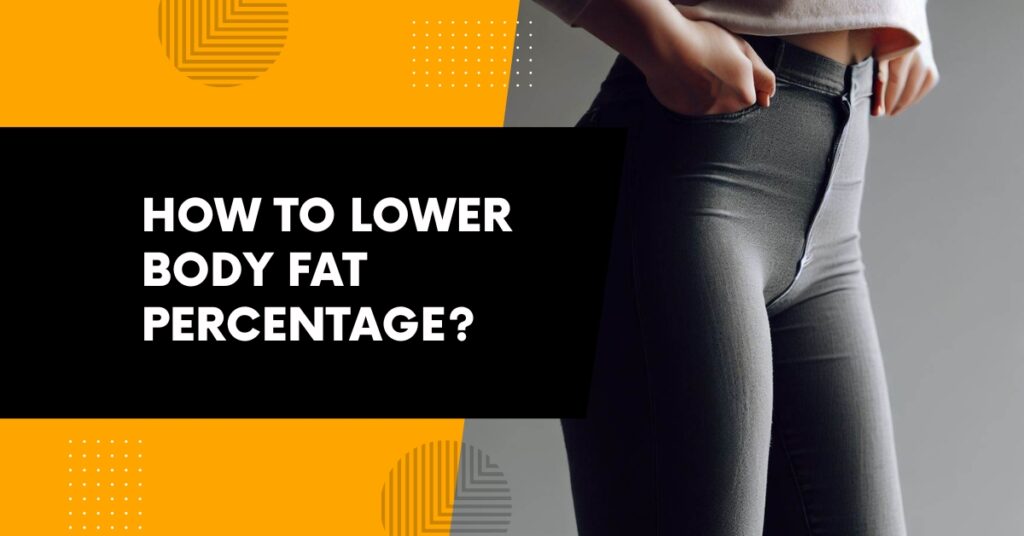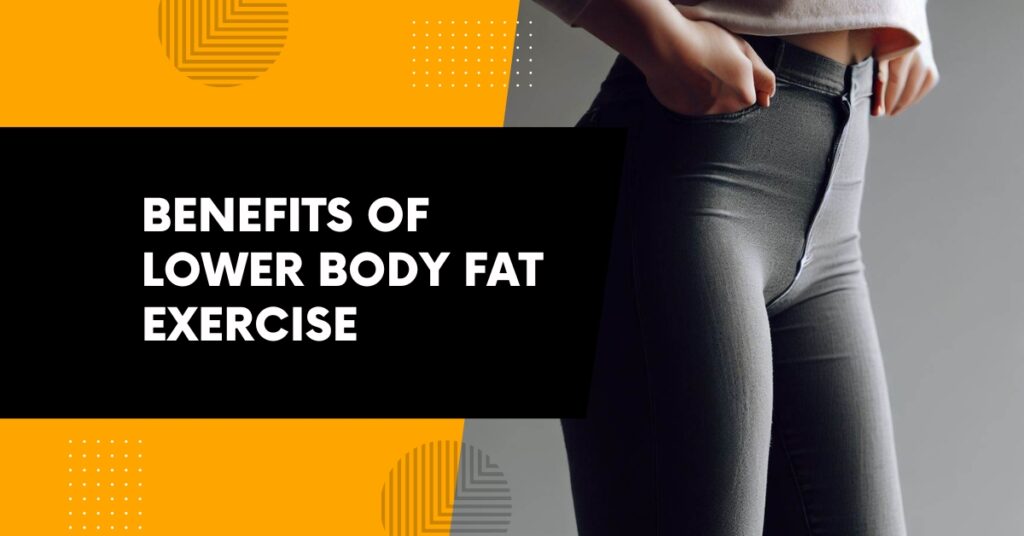How to lower body fat percentage? Discover science-backed techniques for lowering body fat percentage. Our guide covers optimal diets, resistance training, cardiovascular exercise, sleep, and stress management, and more. Start achieving your fitness goals today!
Introduction
Lowering body fat percentage can be a challenging process, but with the right approach, it is achievable. In this article, we will discuss effective ways to lower body fat percentages that are backed by science.
How to lower body fat percentage?
Body fat percentage is a measure of the amount of fat in your body in relation to your overall body weight. It is an important indicator of your overall health and fitness, and having a high body fat percentage can increase your risk of developing health problems such as heart disease, diabetes, and stroke.
If you’re looking to lower your body fat percentage, there are several things you can do to achieve your goal. Here are some tips to help you lower your body fat percentage:

1. Eat a balanced diet:
Eating a healthy, balanced diet is essential for reducing body fat percentage. Focus on consuming whole, nutrient-dense foods such as fruits, vegetables, lean proteins, and healthy fats. Avoid processed foods and foods high in sugar and saturated fats.
2. Stay hydrated:
Drinking plenty of water can help you lose weight and lower your body fat percentage. Aim to drink at least eight glasses of water per day.
3. Strength training:
Strength training is a great way to build lean muscle mass, which can help you burn more calories and lower your body fat percentage. Incorporate strength training exercises into your workout routine at least two to three times per week.
4. Cardiovascular exercise:
Cardiovascular exercise such as running, cycling, or swimming can help you burn calories and reduce body fat percentage. Aim for at least 30 minutes of cardiovascular exercise per day, five days per week.
5. Get enough sleep:
Getting enough sleep is important for overall health and can also help you lower your body fat percentage. Aim for seven to nine hours of sleep per night.
6. Reduce stress:
High levels of stress can lead to weight gain and an increase in body fat percentage. Find ways to manage stress such as practicing mindfulness, yoga, or meditation.
7. Monitor your progress:
Keep track of your body fat percentage and monitor your progress over time. This can help you stay motivated and make adjustments to your diet and exercise routine as needed.
Understanding Body Fat Percentage
Before we can start discussing ways to lower body fat percentage, it is essential to understand what it is and how it is measured. This section will explain what body fat percentage is, how it is measured, and what is considered a healthy range.
Factors Affecting Body Fat Percentage
Body fat percentage is influenced by various factors such as genetics, age, gender, and lifestyle. This section will discuss these factors in detail and explain how they affect body fat percentage.
Setting Realistic Goals
Setting realistic goals is crucial to the success of any fitness program. In this section, we will discuss how to set achievable goals for lowering body fat percentage.
Caloric Deficit The Key to Lowering Body Fat Percentage
Caloric deficit is the most important factor in lowering body fat percentage. In this section, we will discuss how to create a caloric deficit and its role in lowering body fat percentage.
Optimal Diet for Lowering Body Fat Percentage
Diet plays a crucial role in lowering body fat percentage. In this section, we will discuss the macronutrient distribution, foods to avoid, foods to include, and meal timing and frequency for optimal fat loss.
Importance of Resistance Training
Resistance training is essential for building and maintaining muscle mass, which plays a crucial role in lowering body fat percentage. This section will discuss the different types of resistance training and provide a sample resistance training program.
Benefits of Cardiovascular Exercise
Cardiovascular exercise is essential for improving cardiovascular health and burning calories. This section will discuss the different types of cardiovascular exercise and provide a sample cardiovascular exercise program.
Importance of Sleep and Stress Management
Sleep and stress management are often overlooked but are essential for overall health and weight loss. In this section, we will discuss tips for getting better sleep and stress-reducing techniques.
Tracking Progress
Tracking progress is a crucial aspect of achieving any goal, whether it’s related to health, fitness, career, or personal development. Without tracking, it’s difficult to know if you’re making progress, staying on track, or if adjustments need to be made to your strategy. Tracking progress involves setting measurable goals, tracking your progress towards those goals, and making adjustments as needed to stay on track.
It can involve tracking metrics such as weight, body fat percentage, income, or productivity, and can be done through various methods such as using a journal, an app, or a spreadsheet. By tracking progress, you can stay motivated, identify areas for improvement, and celebrate your successes along the way. In this article, we’ll explore the importance of tracking progress, the benefits it can bring, and some tips for effective tracking.
Benefits of lower body fat exercise
Lowering your body fat percentage can bring a host of benefits to your physical and mental health. Here are some of the top benefits of reducing your body fat percentage:

- Improved physical appearance: Lowering your body fat percentage can help you achieve a leaner, more toned physique.
- Reduced risk of chronic diseases: Excess body fat has been linked to a higher risk of chronic diseases such as diabetes, heart disease, and certain types of cancer. By reducing your body fat percentage, you can lower your risk of these diseases.
- Increased energy levels: Carrying excess body fat can make you feel sluggish and tired. By lowering your body fat percentage, you may experience an increase in energy levels and feel more alert and focused.
- Better sleep quality: Poor sleep quality has been linked to higher levels of body fat. By implementing strategies to lower your body fat percentage, you may also improve your sleep quality.
- Enhanced athletic performance: Lowering your body fat percentage can improve your athletic performance by increasing your strength, speed, and endurance.
- Increased self-confidence: Achieving a leaner, healthier physique can boost your self-esteem and increase your confidence.
Overall, there are many compelling reasons to work on lowering your body fat percentage.
FAQ’s
1. How long does it take to lose 5 percent body fat?
Losing body fat requires dedication and hard work, but it is possible to achieve a 1% reduction per week. To make this happen, you need to focus on creating a calorie deficit through proper diet and regular exercise. In approximately five weeks, it’s possible to lose 5% of your body fat, although this doesn’t include any weight loss from water. Interestingly, if you are overweight or have higher body fat percentages, losing 5% of your fat weight can be a bit easier. So, while it requires effort, dedication, and time, losing body fat is achievable with the right approach.
2. How do I get my body fat down to 15%?
Individuals who aim to reach their goal of 15-percent body fat often avoid consuming fatty, fried, sugary, and processed foods. However, occasional indulgences, such as a few slices of pizza or dessert, are allowed in moderation. This is in contrast to those striving for single-digit body fat percentages, who typically adhere to strict dietary regimens with minimal deviations.
3. Does cardio burn fat?
Yes, cardio can help burn fat. Cardiovascular exercises such as running, cycling, swimming, and high-intensity interval training (HIIT) increase heart rate, which in turn leads to an increase in calories burned. When the body requires more energy than it takes in through food, it will start to burn stored fat for fuel, leading to a reduction in body fat over time. Therefore, incorporating regular cardio workouts into your fitness routine can help you achieve your weight loss goals.
4. What triggers fat-burning?
Fat-burning can be triggered by factors such as creating a calorie deficit, increasing metabolism, hormonal changes, getting enough sleep, and managing stress levels.
5. Does sweat burn fat?
No, sweat itself does not burn fat. Sweating is a natural process that occurs when the body’s internal temperature increases, usually due to physical activity or high temperatures. Sweating helps regulate body temperature by cooling the skin and preventing overheating. While sweating may cause a temporary loss of water weight, it does not directly burn fat. However, engaging in regular exercise, which can cause sweating, can help burn stored fat and lead to weight loss over time.
Conclusion
To lower body fat percentage, it’s essential to follow a healthy diet and engage in regular exercise. Creating a calorie deficit, building lean muscle mass through strength training, and managing stress levels can all contribute to reducing body fat. With dedication and consistency, it is possible to achieve a lower body fat percentage and improve overall health and wellness.

